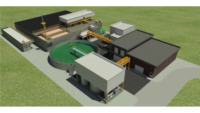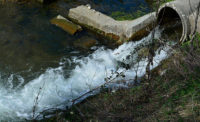Developing a plan to cost-effectively manage your poultry processor’s wastewater is a huge challenge — and a major expense. With some larger operations using a few million gallons of water every day, the cost to treat that wastewater can be costly, but it doesn’t have to be.
Some processors are seeing savings by reclaiming and reusing their wastewater. By doing this, they’re becoming better neighbors in their community, more responsible stewards of the environment and saving money in the process.
Reducing the amount of wastewater by reusing it benefits processors and local municipalities. Many broilers work with their local municipalities to handle their wastewater, but some aren’t properly set up to handle the volume of wastewater that is discharged on a daily basis. Municipalities often charge added fees to treat all the extra impurities found in poultry wastewater. It may be easier to let a municipality manage your wastewater, but you give up some control and may incur added costs.
On the other hand, some processors have established their own on-site water treatment facilities. This moves control of their wastewater back in house but also places responsibility on the processor to ensure its discharge is treated to meet all federal, state and local effluent mandates and conform to all National Pollutant Discharge Elimination System permits. Securing equipment, extra staff and costs related to monitoring and managing an in-house treatment facility can offset any savings seen in comparison with working with a municipality.
The key to lowering costs is to reduce the amount of wastewater discharge. Because the amount of water needed to process a bird isn’t going down, the way to reduce wastewater is to reclaim it.
Nearly all processors are reclaiming some percentage of their wastewater, but much of that is used for things such as lawn care, building landscaping, truck washings, chiller functions etc. They could be using a larger percentage of reclaimed water.
Here’s how:
Screen and filter technology has advanced to the point at which systems can capture particulates as small as 200 microns, which leaves the water clean enough to be used a second time. That water can then be returned to prior operations for reuse. For example, an inside/outside bird washer typically includes three washers. Screened water from the third washer could be sent back to the first or second washer for reuse. This lowers water consumption and reduces the amount of discharged wastewater.
This also addresses environmental concerns. Consumers are demanding the products they buy be manufactured with as small a carbon footprint as possible. Reducing the amount of discharge wastewater within poultry processing is one way to accomplish that and instill confidence with customers that their products are made in an environmentally conscious manner.
Reclaiming and reusing wastewater represents an opportunity for poultry processors to conserve water and save money. Of course, no two applications are the same. Several variables factor into determining what may work for one processor and what may be the best solution for another; however, most processors will find areas in which they can reclaim more of their water for reuse. And that’s a win for everyone. NP









